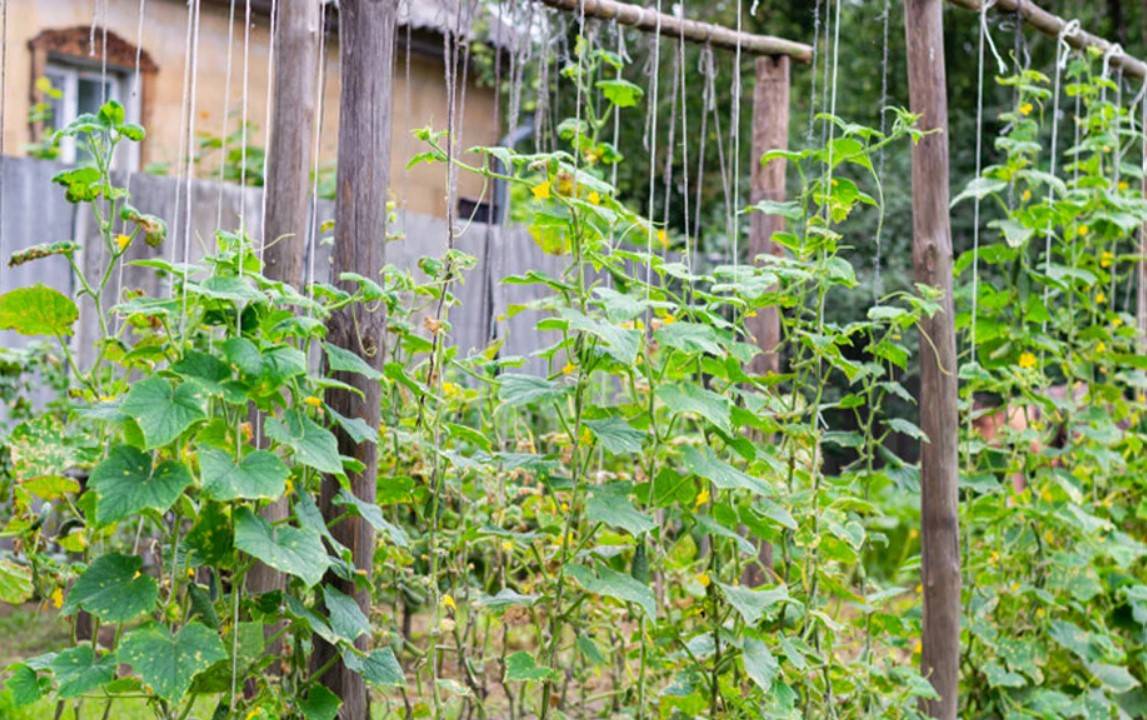
Agricultural practices in India have had a history of several thousand years with their earliest evidence traced back to Indus Valley Civilization sites, such as Bhirrana and Rakhigari in Haryana, Dholavira in Gujarat. Diversity is famously celebrated in various walks of Indian lifestyle and agriculture is no exception.
Many of the vegetables are grown on trellises in India, locally called ‘pandals’ by Indian farmers, which as an agricultural practice goes as far back as the 14th and 15th century. Different crops grown on trellises in India include pointed gourd, ridge gourd, bottle gourd, ash gourd, bitter gourd, broad beans, snake gourd, cucumber, and tomato. The local names for ‘trellis’ are as diverse as the number of vegetable crops grown on them in India.
Why trellising?
Some vegetables in nature produce vines that enable them to climb, therefore to get maximum returns from them, there is a need to stake (staking involves the use of pole-like material to support your climbing plant) and trellis (trellising involves the use of rope-like material to support the plants so that they do not touch the ground) them.
This practice has a significant impact on the crops by letting them flourish and grow in their natural habit but with greater yield and minimum wastage.
Benefits of Trellising/Staking
1) Increased sunlight exposure - Trellising/staking allows more sunlight exposure to the plants and crops
2) Easy Pollination - It allows the pollinators to easily pollinate the area
3) Disease-free plants - Reduces exposure to fungal diseases, deters insects and pests and increases air circulation plants
4) More crops in small spaces - It increases the number of crops planted in any given amount of space
5) Improves fruit quality - Trellising or Staking the crop improves the fruit quality of the crop effectively
6) Easy adaptability - Being a diverse method trellising can be easily adapted and used according to the space provided and the plant in question
Types of trellising/staking:
Two major types of trellis farming structures are used in general:
-
Fixed Type Structures
-
Portable and Temporary structures
Fixed Type Structures
As the name suggests these structures are permanent in nature and are built by digging pits and fixing wooden poles in them which are expected to stay for a minimum of 3-4 years in the ground. Various types of Fixed Type structures are:
1) Vertical Growth Trellis - In these structures, wooden poles are fixed to the ground vertically at a pre-defined equal spacing between them. Vertical type trellis farming is best suited for bitter gourd cultivation with minimum possible fly infestations.
2) Flat Roof Trellis - Flat roof-type trellis systems have just one extra step in addition to the vertical grow systems. They are made by fixing poles on rows in horizontal placement at the top of two adjacent rows. The average height of installing horizontal poles is 1.5-2.1meters. This method is majorly used for growing pointed gourd and betel leaf.
3) Pitched Roof Trellis - The roof of this trellis is not flat in orientation. Instead, it is pitched or slanted. The whole structure makes an inverted V. These structures offer an increased area for the crop to spread easily. This method is also effective in preventing animals from eating away the plant produce.
4) Arch Roof Trellis - As the name suggests the roof of these types of structures is arched and forms an inverted U. Usually thinner and more flexible bamboo poles are used to create the arched structures. Onions, green leafy vegetables, ivy gourd, and pointed gourd are found to be grown on these structures.
Portable & Temporary Structures
These on the other hand are built using poles only but are not inserted into the ground. They are easily removable, portable, and sometimes even reusable. Following are the features of portable and temporary type structures –
1) The vertical poles are not driven into the ground.
2) Horizontal poles are not installed in these types of structures.
3) Galvanized Iron wire is used on all sides of poles to balance these structures. Iron, wood, and steel are the majorly used materials in the making of these types of farming structures.











